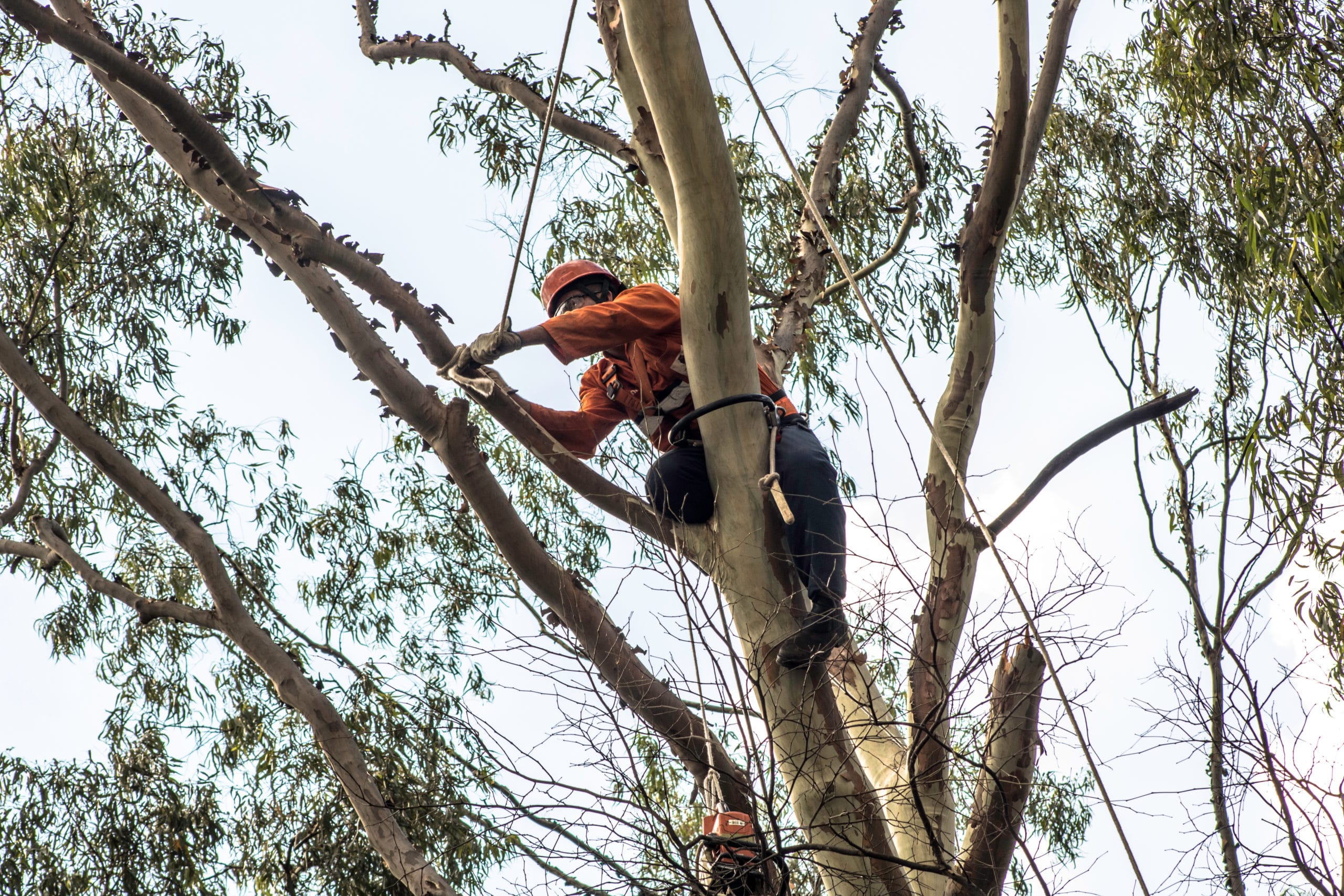Surrounding your house with trees can lend visual appeal to your entire property. Unfortunately, this gorgeous greenery can spell disaster. When trees are too close to your home, the roots can destroy your foundation, and branches hanging over your roof can cause a whole range of problems.
As a general rule, trees should be at least 10 to 20 feet from your home, but the exact distance depends on the size of the tree, its canopy and its root system. Ideally, no part of a tree should touch your home, and branches that hang over your roofline should be trimmed regularly. These limbs can be responsible for serious damage if they break and fall. Not only can your roof or other property surrounding your house be impacted, but your family or houseguests could be put at risk for injury.
At the very least, any branches that hang over the house should be high enough up so that air can pass between the limbs and your roof or the siding of your home. Otherwise, branches of trees or bushes that physically touch your house can scrape the outside walls, damage your roof and potentially break windows.
Additionally, branches and vines that are too close to your home also make the structure more vulnerable to pests and water damage. These limbs provide an easy entryway for carpenter ants, rodents, beetles, termites, wasps and other pests that can chew through your roof and the wood surrounding your home, build nests and get inside your home, which is one way infestations get started.
Tree branches that touch the house might also cause moisture to build up, leading to mold or mildew growth that can decay your roof and walls. Leaves, twigs and other debris can also clog your gutters, leading to an overflow of water that can rot your siding and foundation.
It’s also essential to keep tree limbs away from utility lines to help prevent branches from rubbing or breaking power lines and causing fires and power outages. This also helps reduce the risk that squirrels or other rodents might jump from a tree to a utility line and cause additional outages by chewing through the line.
Generally, branches should be at least six feet from all utility poles and lines. It’s also best to avoid planting trees directly beneath power lines because they might block the utility company’s access to power lines or grow tall enough to reach the utility line. If you’re planting new trees, it’s critical to pay attention to the type of tree and the maximum height it might reach. While smaller trees might only grow to be 10 feet tall, many larger trees like oaks and pecans can reach a mature height of 70 to 100 feet, with their roots and canopy extending out 100 feet as well.
It’s often difficult for homeowners to know how large a younger tree will grow or how long their trees’ underground roots are. In some cases where it’s impossible to trim a tree enough to prevent the branches from causing problems, homeowners may be faced with the difficult decision to remove a tree. If you have questions about the limbs on your existing trees or you’re considering planting new foliage around your home, a certified arborist or tree professional can advise you on your best options. These specialists can also help you protect your home by trimming your tree branches so they are a safe distance from your house and utility lines.
If you find your tree branches are too close to your home give Tennett Tree a call!

